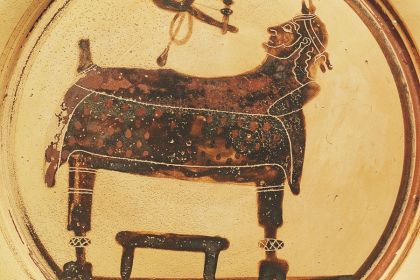SONGWRITER
Livin' la Vida Loca: why is Ricky Martin's best song so catchy?

Livin' la Vida Loca LP
Music Period: 1990s
Livin' la Vida Loca is likely one of the best-known tracks in the entire repertoire of the Puerto Rican singer-songwriter Ricky Martin. The song not only sparked his career but also predetermined the success of other Spanish-speaking Latin pop artists in their transition to the English-speaking market.
The song title can be translated from Spanish as living "the crazy life," while the unpretentious English lyrics briefly—and not without humor—describe a stormy romance against the backdrop of a vibrant nightlife. Neither a standard music video nor a completely ordinary arrangement can be the sole reason behind the overwhelming success of the track in the 2000s and its ubiquitous presence at dance parties around the globe. So what was exactly the reason behind such widespread popularity that elevated Livin 'la Vida Loca to its iconic status in the history of pop music?
A sufficient explanation for the high popularity of Livin' la Vida Loca can be found in its harmonic structure as well as its developed musical form, both of which sustain this signature pulsation so necessary for dance hits. The song was written by the leading Latin music producer Draco Rosa in collaboration with Desmond Child, a prolific songwriter who has penned a number of hits for artists like Kiss, Aerosmith, Bon Jovi, Cher, and Alice Cooper.
Watch Ricky Martin's official music video for Livin' La Vida Loca:
Structurally, Livin' la Vida Loca is composed of three sections, and its harmonic progressions follow the mold of classical theory, namely the C♯m natural minor mode. In the harmonic analysis of the song's chord chains, the scale degrees (denoted with Roman numerals) show the following progressions:
- C♯m–G♯–C♯m–B–C♯m or i–V–i–VII–i for verses
- C♯m–F♯m–G♯m–A–B–G♯ or i–iv–v–VI–VII–V for bridges
- C♯m–B–C♯m or i–VII–i for choruses
The bridges highlight a very energetic movement of the chords showing a stepwise progression from the fourth to the seventh scale degrees and ending with the G♯ major dominant chord. This creates a powerful transition to the chorus which consists of just two triads, making it that much catchier. It is noteworthy that the G♯ major chord, appearing in the verses and bridges, does not belong to the natural minor mode but here it is a manifestation of the harmonic minor scale. This technique is often used in classical cadences to heighten the anticipation of a tonic chord.
Discover more songs composed in Aeolian minor mode and check out their harmonic analysis in the following articles:
- 6 songs combining harmonic minor and Aeolian mode
- 8 songs to introduce Aeolian mode and natural minor scale
- Mariposa Traicionera: meaning and flamenco roots of Maná's top hit
- Locomotive Breath: fine groove born from Jethro Tull's studio session
- Shaman's Blues: quintessential The Doors song refined their most controversial album
- A Dios le Pido: Juanes' Spanish lyrics behind the song success
- I Shot the Sheriff: Burnin' spliff nearly destroyed Bob Marley's original recording
- El Farsante and 7 more songs by Ozuna in Dorian and Aeolian modes



